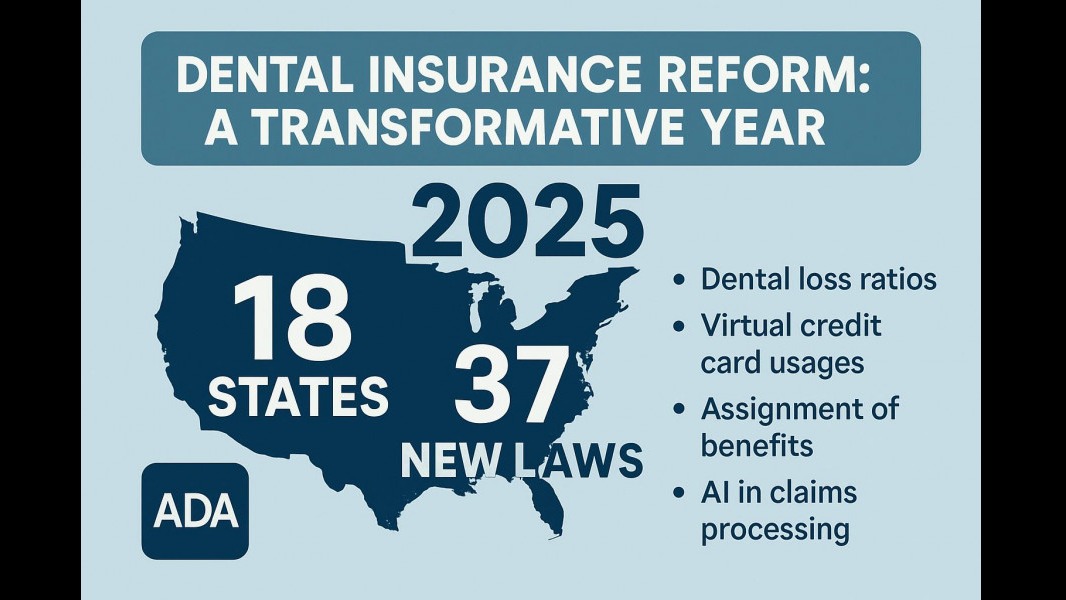
Understanding the Landscape of Dental Care in America
Recent data has disclosed that there are 159,562 general dentists practicing across the United States, according to KFF (Kaiser Family Foundation). This statistic highlights the vital role of general dentists in maintaining the oral health of the American population, and understanding their distribution across states is crucial for both practitioners and patients. This article dissects the availability of general dentists per state, emphasizing not just the numbers but the implications these figures hold for access to dental care.
State-by-State Breakdown of General Dentists
The dental workforce varies significantly from state to state. For instance, California boasts a staggering 24,439 general dentists, which significantly exceeds the numbers in states like Wyoming, which records merely 248. This disparity raises essential questions about access to dental care, particularly in underserved regions where general dentist density is depressingly low.
The following table details the number of general dentists in selected states:
Florida: 9,610
Texas: 13,051
New York: 10,567
Illinois: 6,982
Pennsylvania: 5,289
These numbers illuminate the geographic discrepancies of dental resources and signify areas where greater educational outreach and resources may be necessary.
Implications for Patient Access and Care
Understanding the distribution of general dentists is pivotal for gauging access to dental care in various communities. In states with lower numbers of dentists, such as North Dakota with only 310 general dentists, residents may face greater challenges in accessing necessary dental services. This situation can foster long wait times, heightened emergency situations, and ultimately deteriorating oral health within these populations.
Moreover, as healthcare technology advances, including telehealth and artificial intelligence in diagnostics, rural practices may leverage these innovations to extend their reach, yet gaps still remain prominent. Innovations can only ameliorate the shortages to a limited extent, thus emphasizing the ongoing need for dental professionals in these areas.
The Role of State Policy in Shaping Dental Workforce
Advocacy for improved state policies and educational frameworks to encourage young dentists to practice in underserved areas is crucial. Many states are adopting loan forgiveness programs to combat issues related to dentist shortages. Such initiatives are aimed at incentivizing dental graduates to establish themselves in areas lacking sufficient dental care. For example, incentivizing new dentists to settle in regions like Alaska, which has only 465 general dentists, could lead to a progressive impact on community health outcomes.
Counterarguments: Is More Always Better?
While the focus on increasing numbers is prevalent, it is equally important to consider whether simply increasing the number of dentists is a panacea for these issues. The quality of care, training, and the operational efficiencies of dental practices also deserve attention. The debate continues on how best to balance supply with quality in dental healthcare, steering efforts towards not just quantity but also the efficacy of healthcare delivery systems.
Future Predictions: The Evolving Role of Technology in Dental Practices
As we look toward the future, the integration of artificial intelligence and telemedicine is revolutionizing the landscape of dental care. These technologies promise to fill in gaps, particularly in underserved areas. For practitioners like Dr. Emily Johnson, embracing these trends could enhance overall productivity and patient satisfaction. By leveraging AI-driven tools, dentists can focus more on complex patient interactions than on routine administrative tasks, ultimately enhancing the patient experience and operational efficiency.
Conclusion: The Path Forward in Dental Care Accessibility
The state-by-state overview of general dentist availability not only sheds light on the current landscape of dental care but also outlines implications for future policies and innovation. A multi-faceted approach that includes technological integration, community outreach, and supportive state policies will be essential in addressing the disparities that exist today. As we reassess the dental workforce distribution, the goal should ideally evolve towards ensuring equitable access to quality dental care for all populations, regardless of geographic location.
 Add Row
Add Row  Add
Add 




Write A Comment